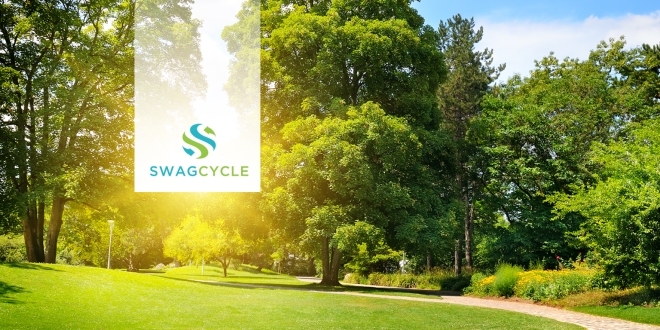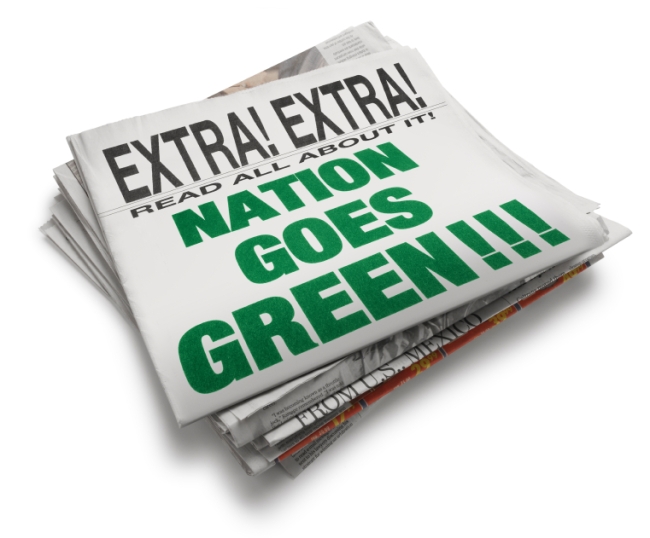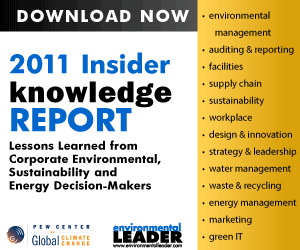 Hi all – I was pleased to be featured on GreenMarketingTV in late May, and wanted to share the article with you. Here’s a link. I have also included the text of the interview below:
Hi all – I was pleased to be featured on GreenMarketingTV in late May, and wanted to share the article with you. Here’s a link. I have also included the text of the interview below:
Green Entrepreneur Interview: Ben Grossman, Sustainable Direct Mail | Green Marketing TV
http://www.greenmarketing.tv/2011/05/24/green-entrepreneur-interview-ben-grossman-sustainable-direct-mail/
Award-winning green entrepreneur, Ben Grossman of Grossman Marketing, talks about how to develop a sustainable direct marketing campaign and what it takes to transform a fourth-generation business into one with a strong environmental focus.
What was your inspiration for starting Sustainable Ink? When and how did you get started?
I started my blog, Sustainable Ink, in 2007. I had joined my fourth-generation family business, Grossman Marketing Group, the previous year and was often thinking about sustainability and green business issues. Our business was founded in 1910 as Massachusetts Envelope Company, and it’s evolved into an integrated marketing services firm.
Today, our main service lines are a design studio, envelopes and direct mail services, printing of all kinds, and promotional products. In addition, we have a fast-growing e-commerce and rewards and incentives business. As oil prices were rising, and global warming had gone from a fad to stated fact, I saw the writing on the wall – that we live in a world with finite resources, and consumers are increasingly interested in companies’ environmental footprint, commitment to environmental causes, and the sustainability of their products.
I wanted to start a blog through which I could discuss these issues, with an emphasis on marketing services and my industry. I have been very proud to see the site’s readership grow over time, and have some of my posts picked up by national green news sources, most recently Environmental Leader and Ecopreneurist.
I launched our firm’s green marketing and sustainability practice the previous year with the goal of working with my team to help clients identify environmentally-conscious business practices as a way to differentiate them from their competition and establish a competitive advantage in their respective fields. For this work I was the 2009 recipient of the New England Direct Marketing Association Prodigy Award. The Prodigy Award is given to one marketing professional each year in New England under the age of 30 who has added the most to the art and science of direct marketing in the prior year.
Is interest in sustainable marketing growing or declining?
Green marketing is definitely not out, but consumers have been inundated with an array of green logos, claims and messages, and they are becoming increasingly skeptical of the green claims they read and hear. Much of the research I have seen, as well as my own experience, point to the need for transparency in green marketing claims. People want to know not only how a product is green, but according to whom. The third-party reference needs to be a legitimate one – not an unknown group with a confusing website.
In the print world, the best example of a strong and respected third-party authority is the Environmental Defense Paper Calculator. On this site, people can calculate the savings derived from using papers with post-consumer recycled content. These savings include energy, wastewater, trees, etc. I like this because it’s a resource that is industry independent. Although I respect the savings calculators put together by paper companies, using a third-party resource rings truer to consumers.
How do you help your clients target and reach green consumers?
There is a wide range of ways to target and reach green consumers. They include buying ads on websites that cater to these consumers, as well as on-the-ground outreach at community events. In addition, using sophisticated direct mail techniques, the right brand can reach the right people with useful, actionable direct mail.
How do you help businesses communicate their green-ness to their customers?
The most important advice I can give to companies is to tell the truth and be transparent in their claims. Companies get in trouble by greenwashing – when they mislead consumers about their environmental practices or the environmental benefits of a product, and consumers are getting fed up. As I mentioned earlier, when making a claim, try to use a respected third-party resource to verify it.
How do you find your customers?
The best customers come by referral, but we also find them through speaking engagements, direct mail, networking, social media and online ads. We believe the best campaigns are integrated ones, and we try to practice what we preach!
What are consumers looking for in a green company? What messages do they want to hear?
Consumers are looking for green products to be made from renewable resources, use recycled content, or with less materials than in the past. For service providers, consumers are looking for consistency. For example, if a hotel claims to be green because of an array of practices, it is somewhat of a contradiction when there are no easy ways to recycle plastic bottles, cans, paper, etc. I have seen this too often when traveling on business, and I wish some hotels would give greater consideration to waste management practices.
Does sustainable marketing typically cost more money?
Sustainable marketing shouldn’t necessarily cost more money. In the print business, people can generally use recycled papers, vegetable-based inks and renewable energy in the production process for no extra cost. There are of course premium eco-friendly papers that add cost (New Leaf, Mohawk Options, Neenah Environment, to name a few), but if a marketing professional is working with the right vendor partners, they should be able to reduce their footprint without adding much cost.
What recommendations do you have for businesses to green their marketing without breaking the bank?
As I mentioned earlier, people can use vegetable-based inks, renewable energy and recycled materials for little or no extra cost. Some practices can cut costs – like considering the production of an item during the design stage, so it gets optimized for printing to use the least amount of paper. In addition, when people manage their mailing lists well, they mail fewer pieces to a better audience, thus cutting postage and printing costs.
Are all your marketing services eco-friendly? How is your business greener than your competitors?
Our services are fairly resource intensive, so we try to be conscious of our footprint at all steps in the process. For example:
1) All metal printing plates are collected after use and given to a recycling company.
2) All press solvents and washes are low VOC (volatile organic compound) formulas that minimize impact on the environment as they contain no acetones.
3) All non-metallic inks are vegetable-based (i.e. non-petroleum based). The ink contains approximately 35% oil, all of which is vegetable-based (soy and linseed).
4) Our inks are made from a “stay open” formula – meaning that the top layer does not skim over and form an unusable layer – this reduces ink use by about 10% annually.
5) All waste ink is sent to a recycler where it is mixed with other waste to form a low-grade heating oil.
6) All paper waste and cardboard packaging are sent to a paper recycling company.
7) Our prepress system is entirely chemical free – only water is used to rinse the plate after imaging.
8) All waste oil is recycled with an oil recovery service.
9) All wood pallets are returned to our paper merchants for re-use.
10) In addition, here’s a blog post I wrote about recycling, in which I explain that we allow our employees to bring in batteries, CFLs, fluorescent tube bulbs and paint from home to be recycled by a partner of ours. We recently added a Big Green Box to our office so our colleagues can bring in electrical waste from home as well.
What kinds of mistakes do green businesses generally make that you would advise against?
The worst mistake is to not tell the truth or to make misleading statements and we strongly advise against them. In addition, we make sure that green marketing underpins an organization’s overall commitment to sustainable practices. If they are just surface changes, consumers will see through them. In addition, employees want to work for socially responsible organizations.
What mistakes have you made as a green entrepreneur and what advice would you give others looking to start a green business?
Sometimes I have had the tendency to try to make a product or offering perfect before rolling it out. One piece of advice I would have is to “beta” test everything, as early customer feedback will always help you improve.
You can get in touch with Ben through Twitter.







